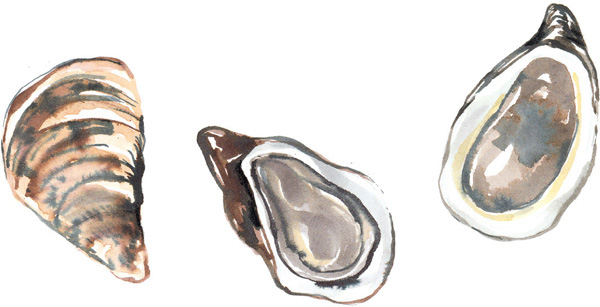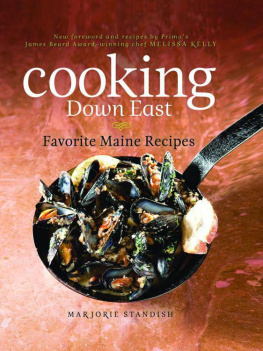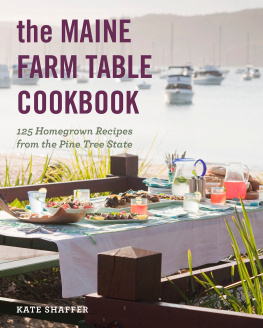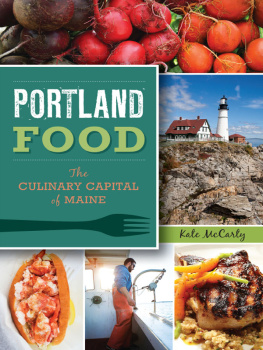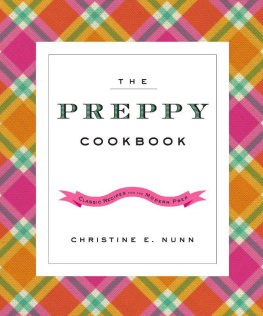Contents
Guide
Page List


THE
LITTLE LOCAL
MAINE
COOKBOOK
Recipes for Classic Dishes
ANNIE B. COPPS

For Rick Johnson, who loved Maine
CONTENTS
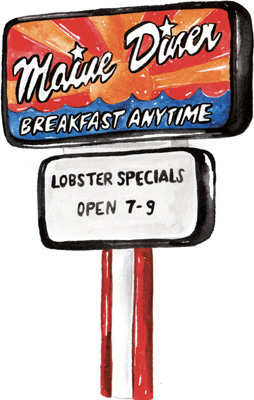
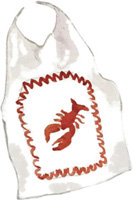
The state of Maine is an extraordinary part of the world packed with miles of breathtaking and diverse natural beauty, as well as a strong and proud culture that is equally diverse and beautiful. From the town of Eastport, where the sunrise is always the first in the nation, to the 250 miles of rocky coastline to the interior full of snow-covered mountains and deep woods, its easy to understand why Maine is nicknamed Vacationland and how Winslow Homer, Andrew Wyeth, and Stephen King found so much inspiration there.
The gracious rewards of the sea and the fertile land have long provided delicious, fresh seafood and produce for the people of Maine and those who come to visit it. Neptune has been kind to the hardworking men and women who make their living from the clean, cold waters of Maine, and those working the fields benefit from its rich, fertile soil. When most people think of lobsters, or of blueberries or potatoes, Maine comes to mind. But Maine cuisine offers so much more. Traditional recipes dating back to the time of the earliest settlers are still served in many homes, and some Maine kitchens are cooking up head-turning meals using locally sourced ingredients with contemporary twists.
This little book celebrates the bounty of Maine and the talented people who make their living harvesting from its land and sea, as well as the many home cooks and professional chefs who keep Maine cuisine relevant.
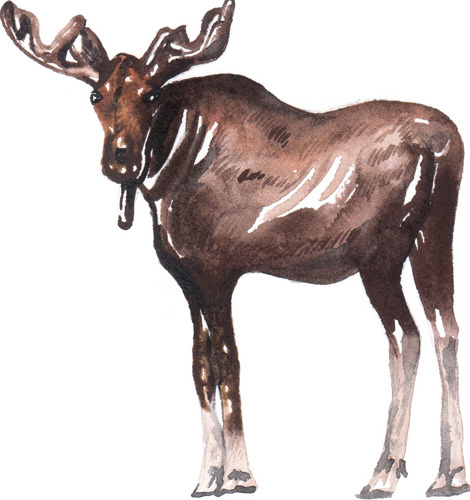
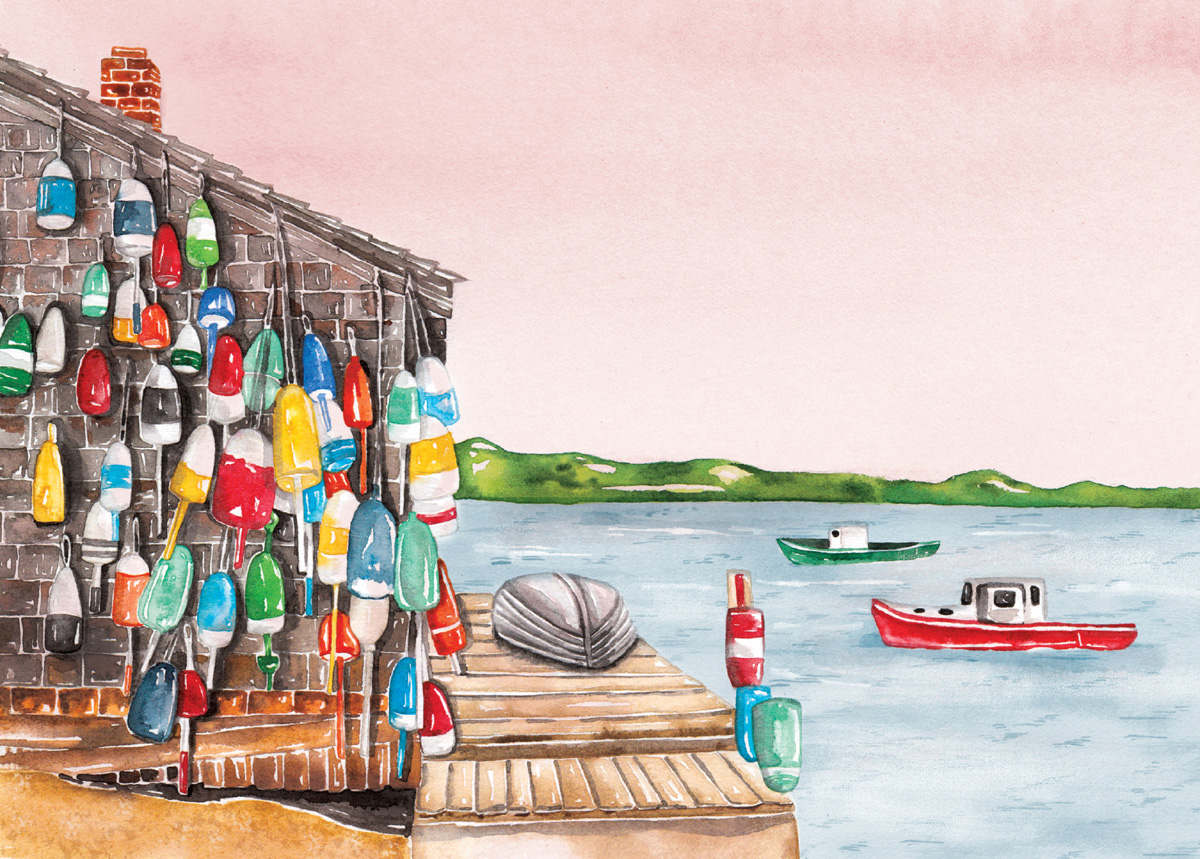
Raw, Roasted, and Fried
Of all the ingredients found around the globe, an oyster is best at telling you exactly where its from. On the East Coast, most of the oysters are from the same species Crassostrea virginica, but their breeding ground, shape, and size all play roles in how they taste. An oysters flavor differs depending on the temperature and salinity of the water in which it breeds, what else grows in those same waters, and the local tides and currents. The cold and briny Atlantic Ocean and the rivers of Maine produce world-class oysters, and depending on where and when they are harvested, they vary in taste, texture, and size.
The cold waters of the Damariscotta River produce wonderful oysters from many spots along its banks, such as Pemaquid, Wawenauk, or Glidden Point. The Bagaduce River, Taunton Bay, and hundreds of other locations around Maine are great sources for oysters as well.
Purists prefer oysters served raw, on the half shell, and with a squeeze of lemon juice or a simple mignonette sauce, but their lightly salty flavor and silky texture are also excellent fried or roasted.
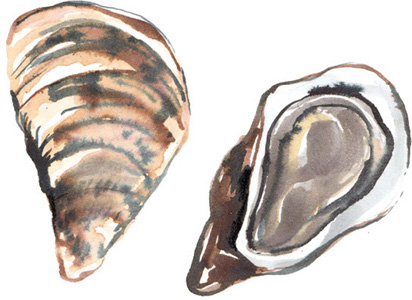
RAW ON THE HALF SHELL WITH MIGNONETTE SAUCE
Makes 12 pieces
cup apple cider vinegar, red wine vinegar, or Champagne vinegar
1 tablespoon finely minced shallots
teaspoon coarsely ground fresh black pepper
12 medium (3-inch) fresh Maine oysters, shucked and on the half shell
To make the mignonette sauce, in the a small bowl, stir together the vinegar, shallots, and black pepper. Set aside.
Arrange the oysters in their half shells in a shallow bowl or platter on a bed of ice. Spoon some mignonette sauce on top of each oyster. Serve chilled.
BACON WRAPPED AND ROASTED
Makes 12 pieces
12 medium (3-inch) fresh Maine oysters, shucked, oyster meat reserved (clean and reserve one shell from each oyster)
cup cream cheese or mascarpone cheese
3 tablespoons chopped fresh flat-leaf parsley
2 tablespoons minced scallions (about 2), white and light green parts only
Freshly squeezed juice of 1 lemon
12 thinly sliced strips bacon, pancetta, or prosciutto (4 inches long by 2 inches wide)
Heat the oven to 450F.
Place reserved oyster shells on a salt-lined baking sheet to keep them stable.
In a small bowl, combine the cream cheese, 2 tablespoons parsley, the scallions, and 2 teaspoons lemon juice. Set aside.
Lay the bacon strips vertically on a clean surface. Gently shake loose any moisture from a piece of oyster meat and place on the bottom end of a strip of bacon. Spoon a small dollop of the cheese mixture on the oyster meat. Carefully roll the bacon over the oyster and cheese and place the rolled package back in a reserved shell, bacon seam side down. Repeat with the remaining oysters.
Place in the oven and roast 10 to 15 minutes, until the bacon is crisped and lightly browned.
Remove from the oven and transfer to a salt-lined plate or platter. Scatter the remaining lemon juice and sprinkle the remaining parsley over the oysters. Serve immediately.
FRIED WITH TARTAR SAUCE
Makes 12 pieces
12 medium (3-inch) fresh Maine oysters, shucked, clean, and reserve one shell from each
2 cups buttermilk
1 cup cornmeal
1 cup all-purpose flour
Kosher or sea salt
Freshly ground black pepper
Vegetable oil for frying
Tartar Sauce for serving (recipe follows)
Garnish: fresh chopped parsley
In a medium bowl, soak oysters in buttermilk for about 20 minutes but not more than 1 hour.
In a second, larger bowl, combine the cornmeal, the flour, and a pinch each of salt and black pepper.
In a deep fryer or deep-sided cast-iron pan, heat 3 inches of oil to 375F.
Gently shake excess buttermilk off the oysters and dredge the oysters in the flour mixture until completely coated. Gently shake off any excess flour and carefully slip the oysters into hot oil, being careful not to overcrowd the pan. Fry until golden brown, 3 to 4 minutes. Remove the oysters with a slotted spoon and drain on a paper towellined plate; season with salt while still hot.
Make a -inch layer of salt on a plate or platter and nest the shells in the salt. Place 1 tablespoon Tartar Sauce in each shell, place a hot oyster on top, and sprinkle with parsley. Serve immediately.
TARTAR SAUCE
Makes about 1 cup
1 cup mayonnaise
2 tablespoons sweet pickle relish or finely chopped pickles
1 teaspoon fresh lemon juice
teaspoon Tabasco sauce
In a bowl, stir together all the ingredients until well combined. Refrigerate until ready to use.
